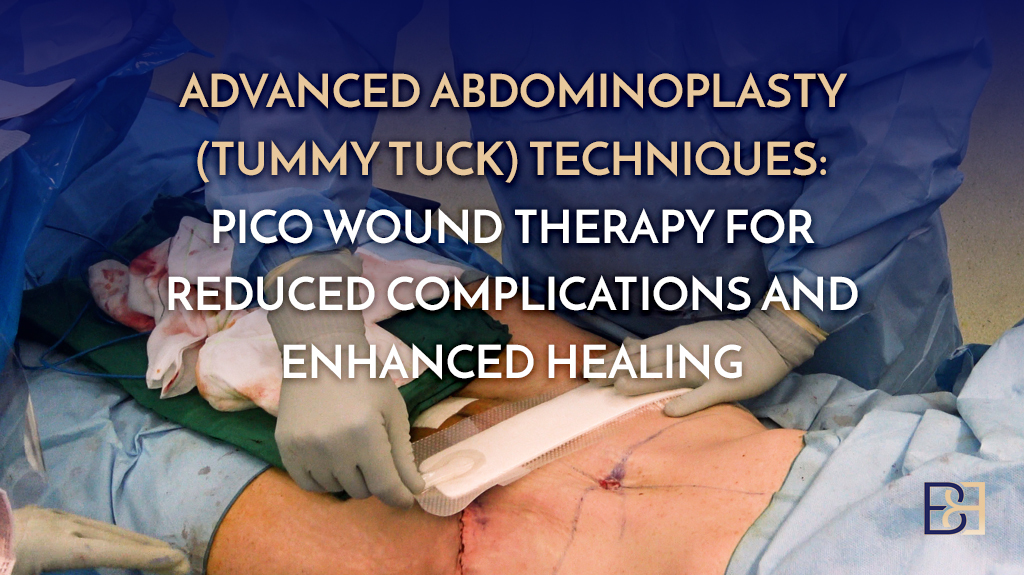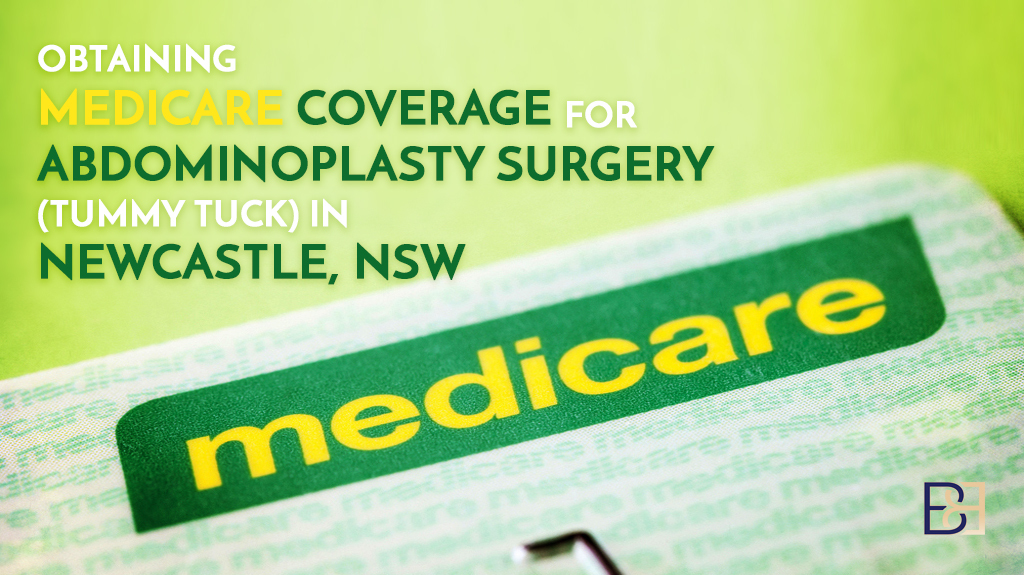Worried about abdominoplasty scars? This article will show you how to help you learn about the healing stages, effective treatments, and steps to prevent visible scars.
Key Takeaways
- Abdominoplasty scars are normal and healing varies by individual; a skilled surgeon can help reduce their appearance.
- Understanding the healing stages of scars—from initial redness to eventual fading—can help manage your expectations during recovery.
- Using treatments like silicone sheets, avoiding sun exposure, and maintaining a wellness-centered lifestyle can significantly impact scar healing and visibility.
Understanding Abdominoplasty Scars
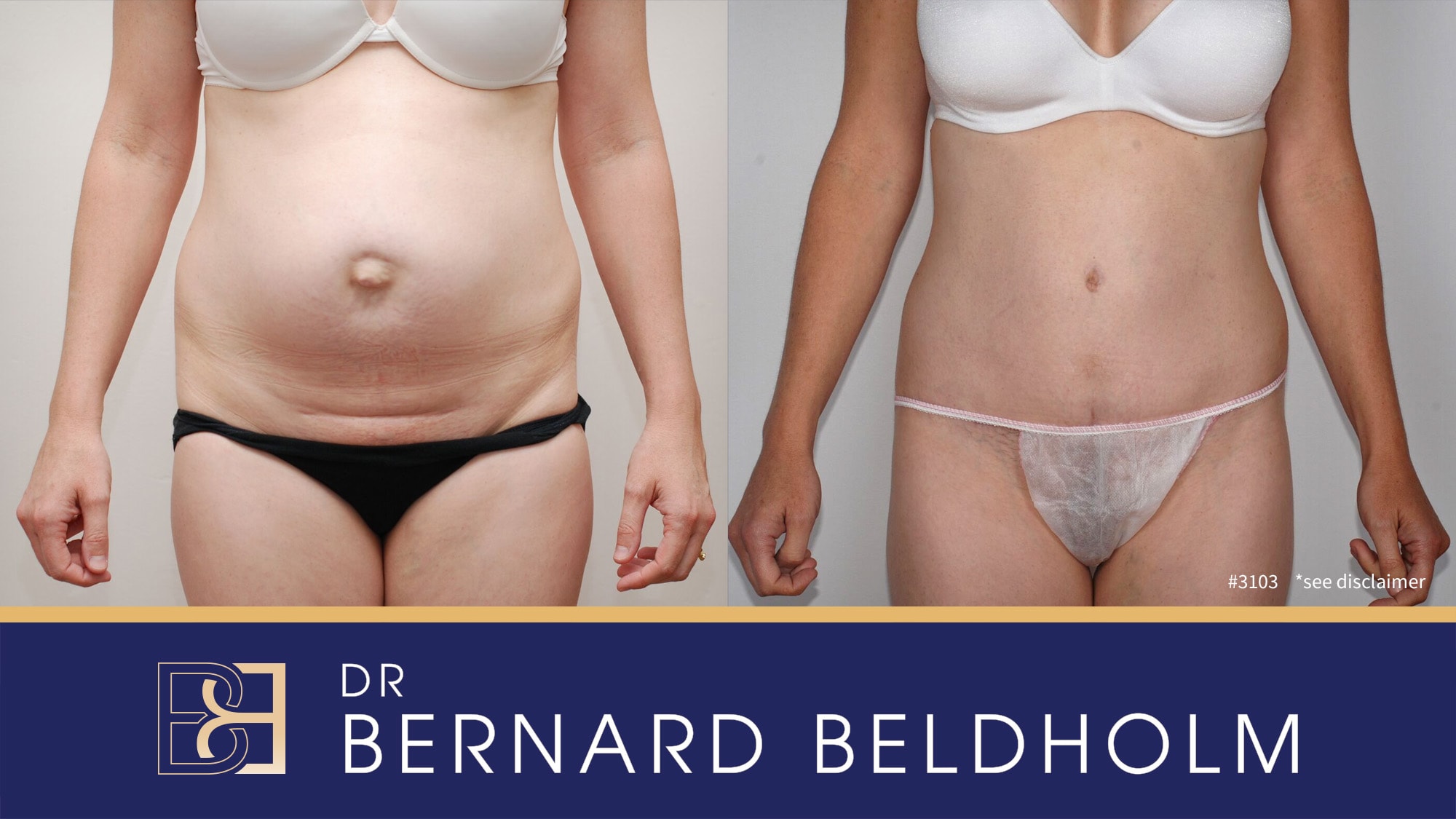
Disclaimer: Operation performed by Dr Bernard Beldholm. Adult content, surgery has risks; individual results vary, seek 2nd opinion. Please see the full disclaimer.
Book your appointment online now
Yes, incisions will leave scars from Abdominoplasty surgery.
While genetics plays a role in healing, the skill and technique of your surgeon significantly influence the appearance of scars.
Understanding that Abdominoplasty scars are inevitable can help manage expectations, but they don’t have to be a source of stress. Advanced surgical techniques and proper post-operative care can make a world of difference.
So, let’s embark on this journey to learn how to care for scars effectively.
Stages of Scar Healing After Abdominoplasty
The evolution of Abdominoplasty scars occurs over time, with their appearance changing significantly at various stages after surgery. Understanding these stages can help you manage your expectations and take appropriate care at each step, including monitoring your Abdominoplasty scar progress.
Initial Post-Surgery Phase
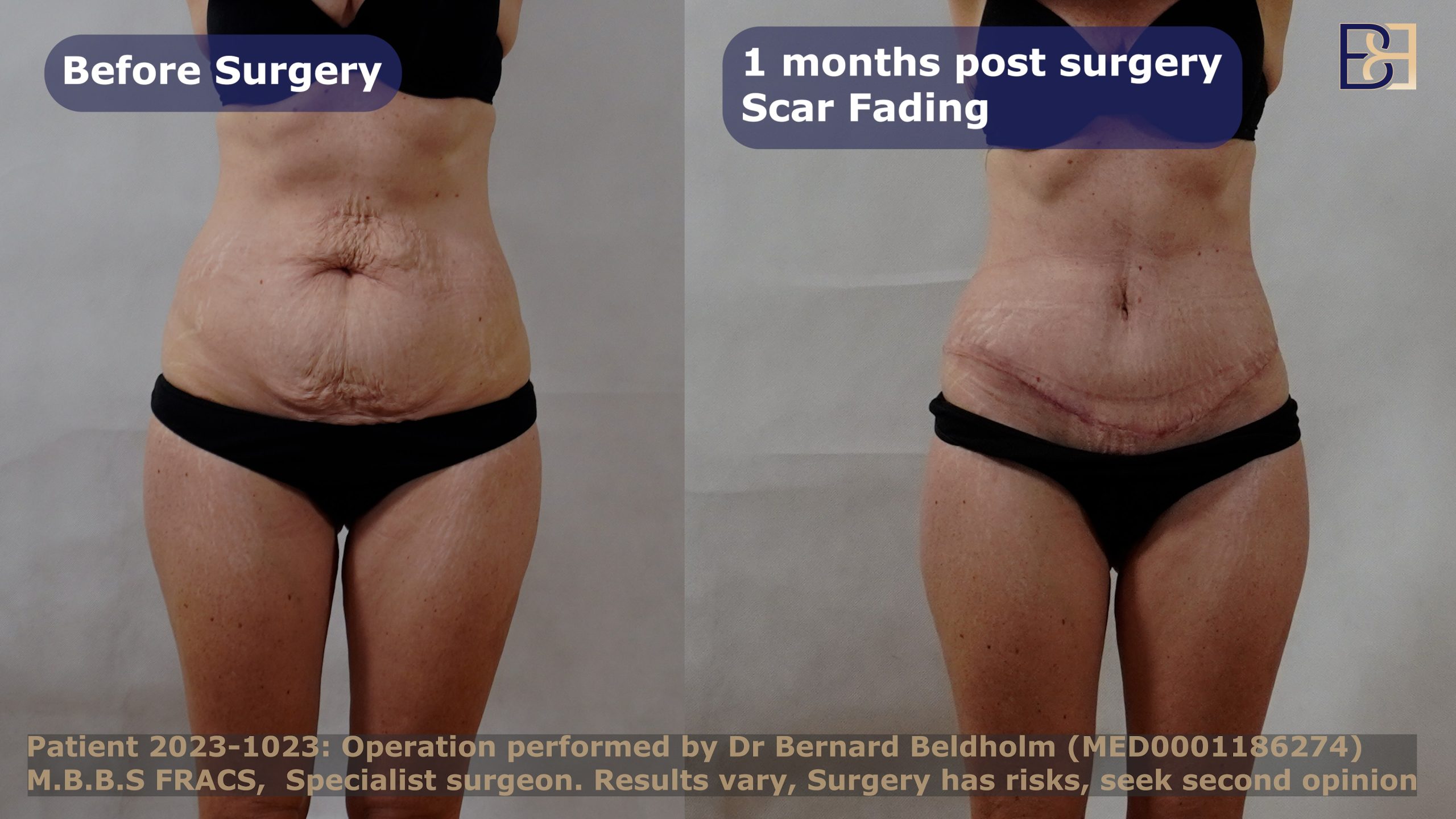
Disclaimer: Operation performed by Dr Bernard Beldholm. Adult content, surgery has risks; individual results vary, seek 2nd opinion. Please see the full disclaimer.
Right after surgery, your scars will typically appear red, swollen, and inflamed. This is completely normal. Keeping the scar clean is crucial to avoid infection and ensure proper healing. During this phase, meticulously following your surgeon’s instructions is crucial. The scar may appear raised and red, with lumps or bumps resulting from internal sutures surfacing.
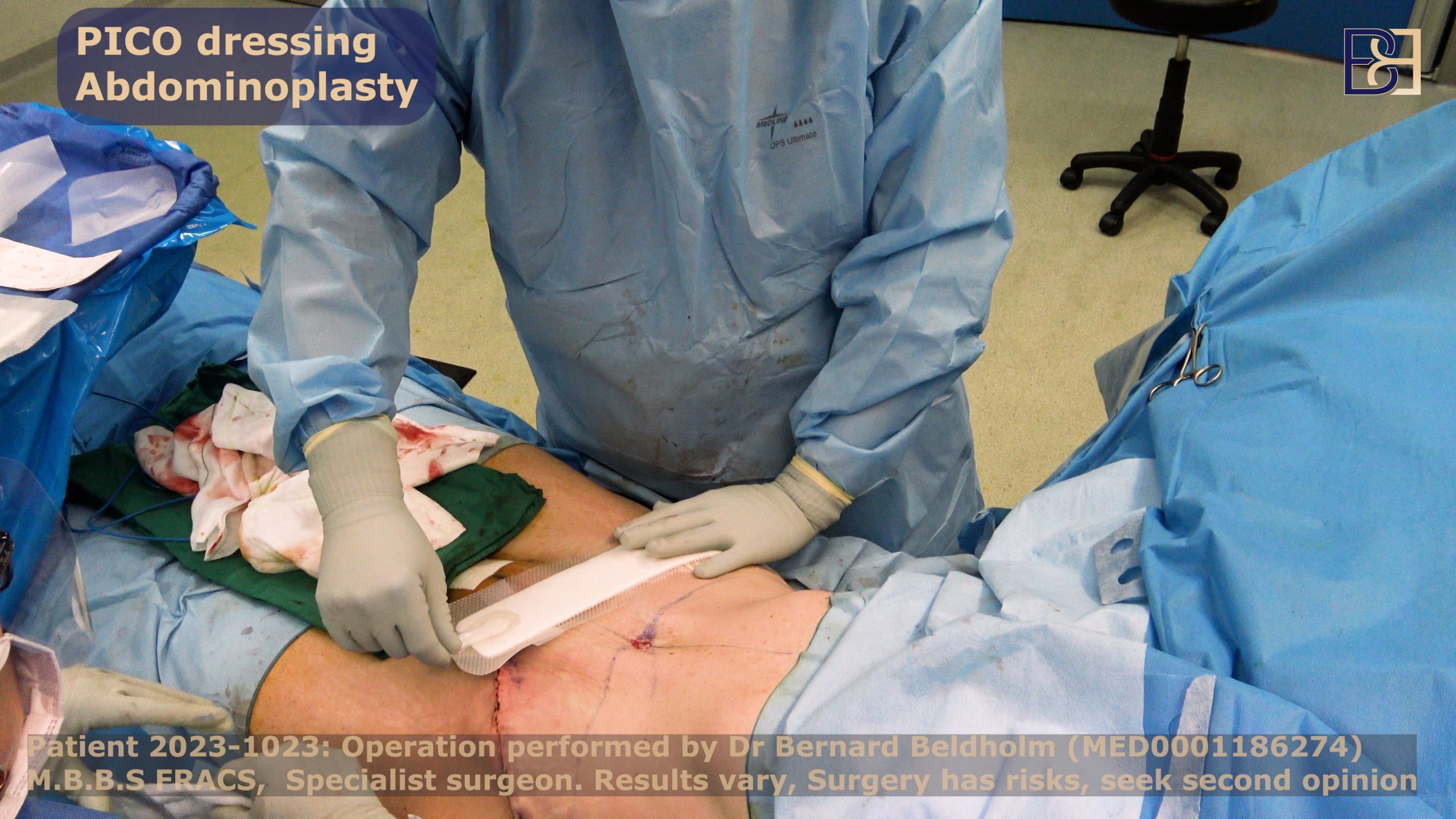
Special surgical dressings are often used to protect the incision site during the initial healing phase. These dressings help to keep the area clean and reduce the risk of infection, which is vital for proper scar healing. Remember, patience is key during this stage as your body begins its natural healing process.
Early Healing (1-3 Months)
As you move into the early healing phase, which spans from one to three months post-surgery, you’ll notice that your scars may still appear dark red or brown, depending on your skin tone. This is when scar healing truly begins to take shape. The texture of the scars can be quite varied, often feeling raised or discoloured as the body produces collagen to heal the area.
By the end of this period, redness may reduce, and swelling and lumps should begin to diminish. The wound healing process is well underway, and you should start seeing less swelling and gradual fading in the scar’s colouration.
Intermediate Healing (3-6 Months)
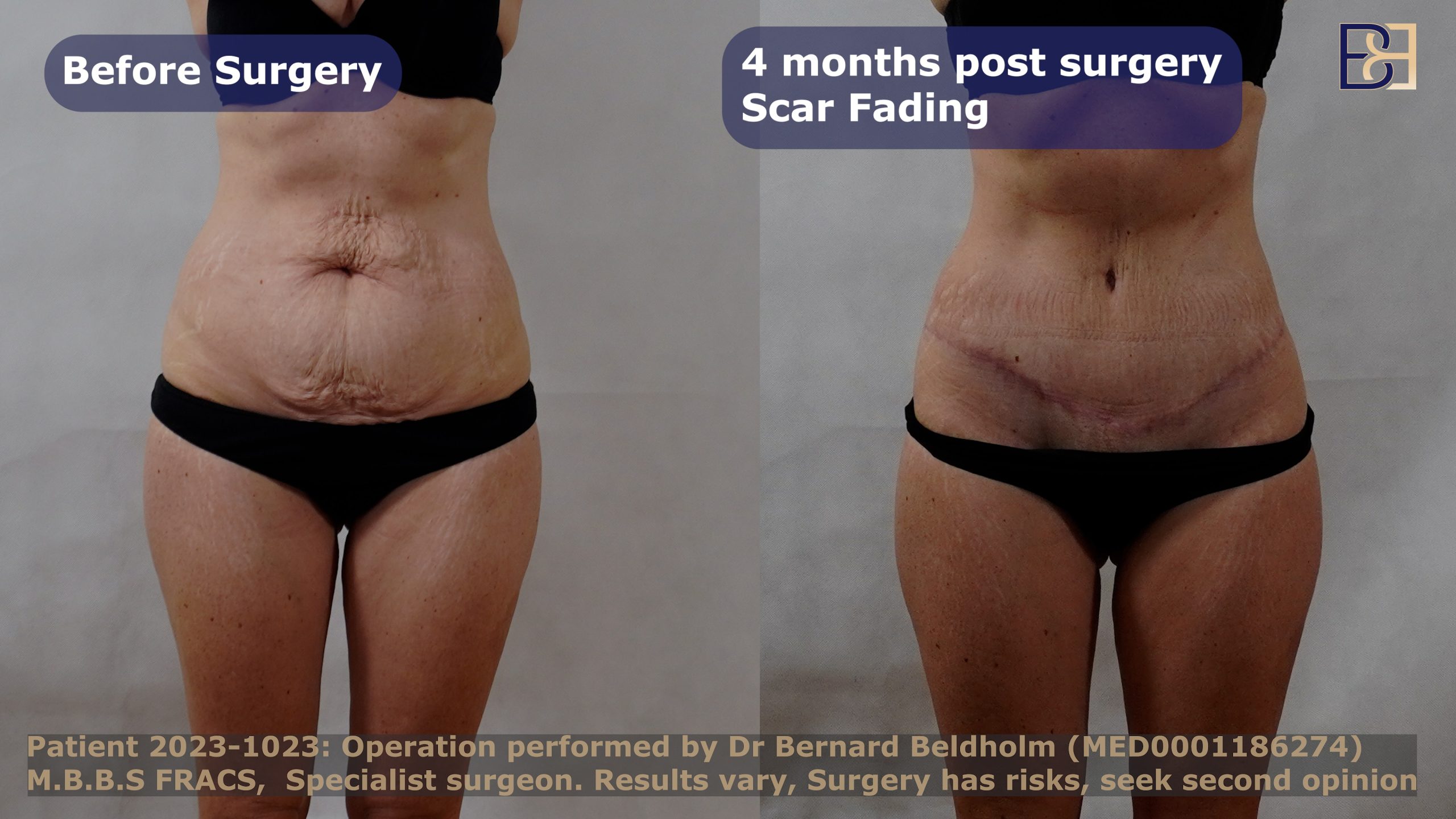
Disclaimer: Operation performed by Dr Bernard Beldholm. Adult content, surgery has risks; individual results vary, seek 2nd opinion. Please see the full disclaimer.
During the intermediate healing phase, which spans from three to six months post-surgery, your scars will undergo significant changes. The colour of the scars typically transitions from dark red to softer shades like rosy pink or soft brown. This stage marks a notable transition as abdominoplasty scars begin to mature.
By six months, many patients notice significant fading in their scars, indicating positive healing progress. The scars begin to flatten and show signs of lightening.
Long-Term Healing (6-24 Months)
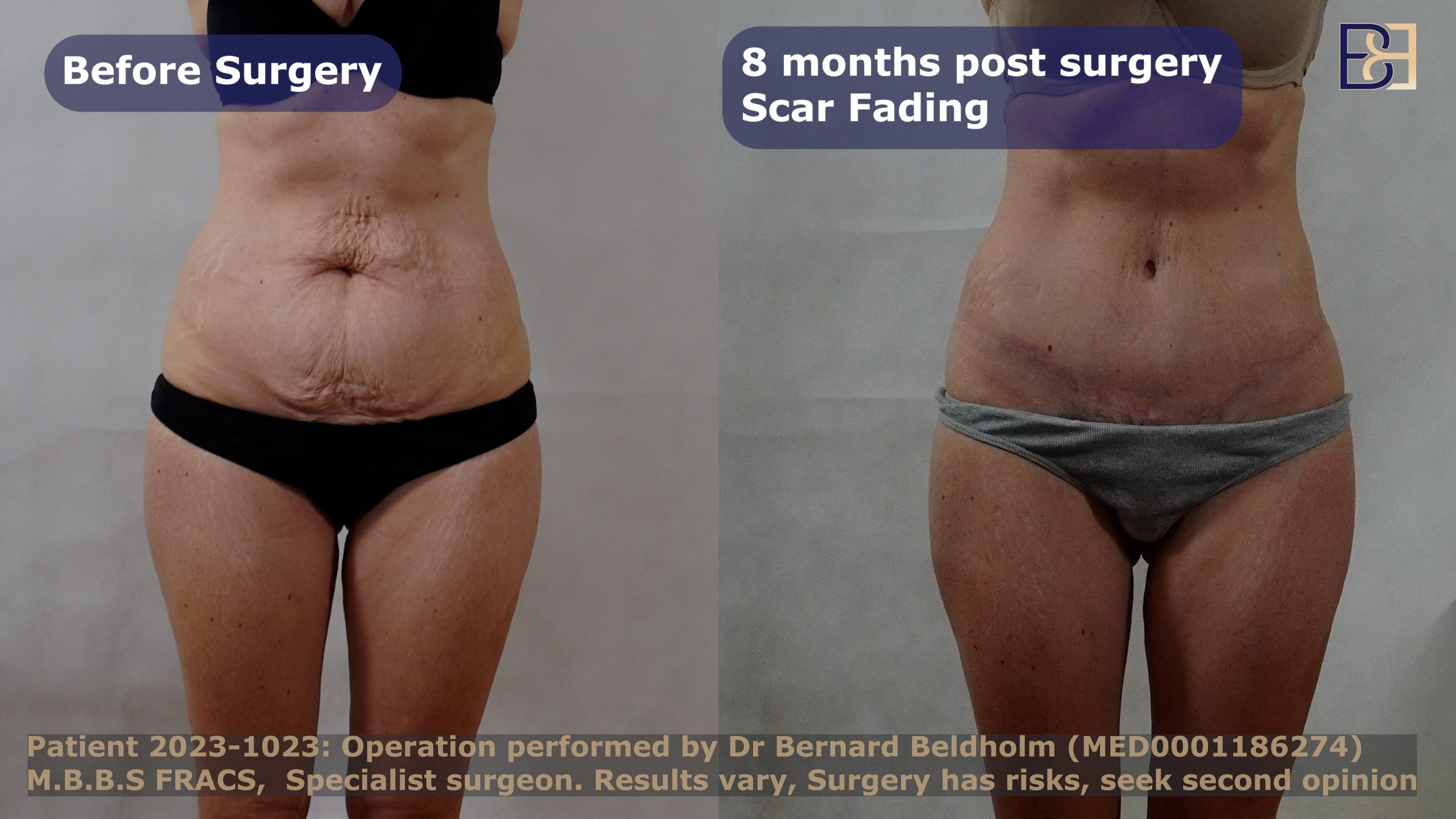
Disclaimer: Operation performed by Dr Bernard Beldholm. Adult content, surgery has risks; individual results vary, seek 2nd opinion. Please see the full disclaimer.
In the long-term healing phase, which spans from six months to two years post-surgery, your scars will continue to evolve. Initially, abdominoplasty scars may appear deep purple or red, but they will gradually fade to a paler colour over 18 months to two years. By the one-year mark, abdominoplasty scars usually become less noticeable and may present a softer colour.
Most abdominoplasty scars can take up to two years to fully mature and fade into less noticeable lines. A mature scar in individuals with lighter skin may eventually fade to a pale white line, offering a smoother and more aesthetically pleasing appearance.
Types of Abdominoplasty Procedures and Their Scars
There are several types of abdominoplasty procedures, each with its own approach and resulting scars. Understanding the differences can help you make an informed decision and set realistic expectations for scar placement and visibility.
Mini Abdominoplasty
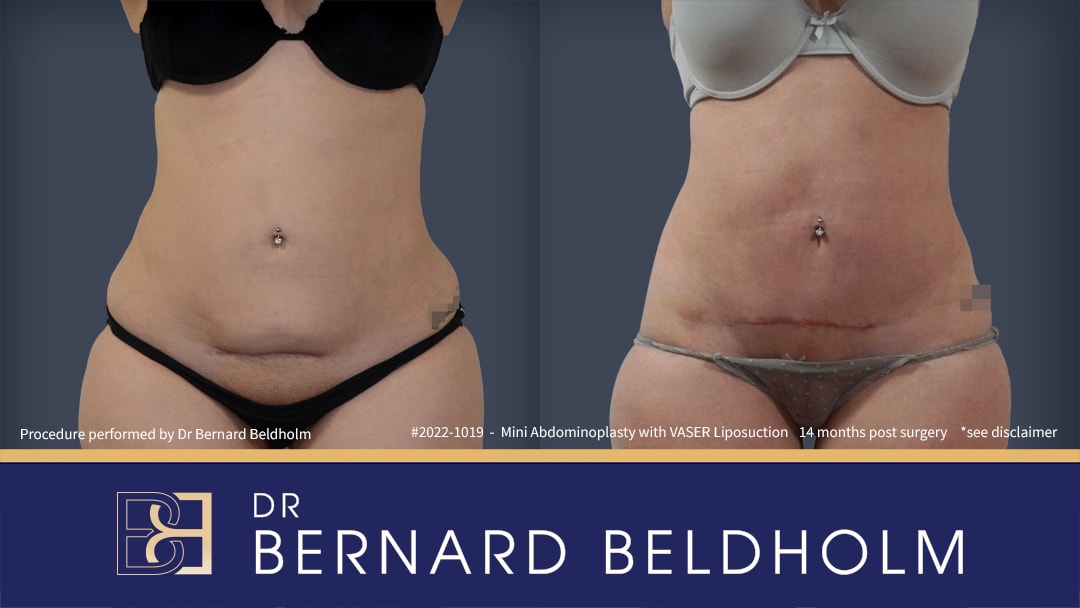
Disclaimer: Operation performed by Dr Bernard Beldholm. Adult content, surgery has risks; individual results vary, seek 2nd opinion. Please see the full disclaimer.
A mini abdominoplasty is designed for patients who feel that the lower abdominal skin is too loose and are not concerned about the upper abdomen. A mini abdominoplasty tightens the lower abdominal skin. The scar from a mini abdominoplasty appears as a thin, curved line above the pubic bone and is located along the bikini line, making it significantly smaller and less noticeable than that of a full abdominoplasty.
This procedure involves a smaller incision across the lower abdomen, resulting in less scarring and a lessened recovery time compared to other types of abdominoplasties. It’s a viable option for those looking to remove loose skin and minor excess fat in the lower abdomen.
Full Tummy Tuck
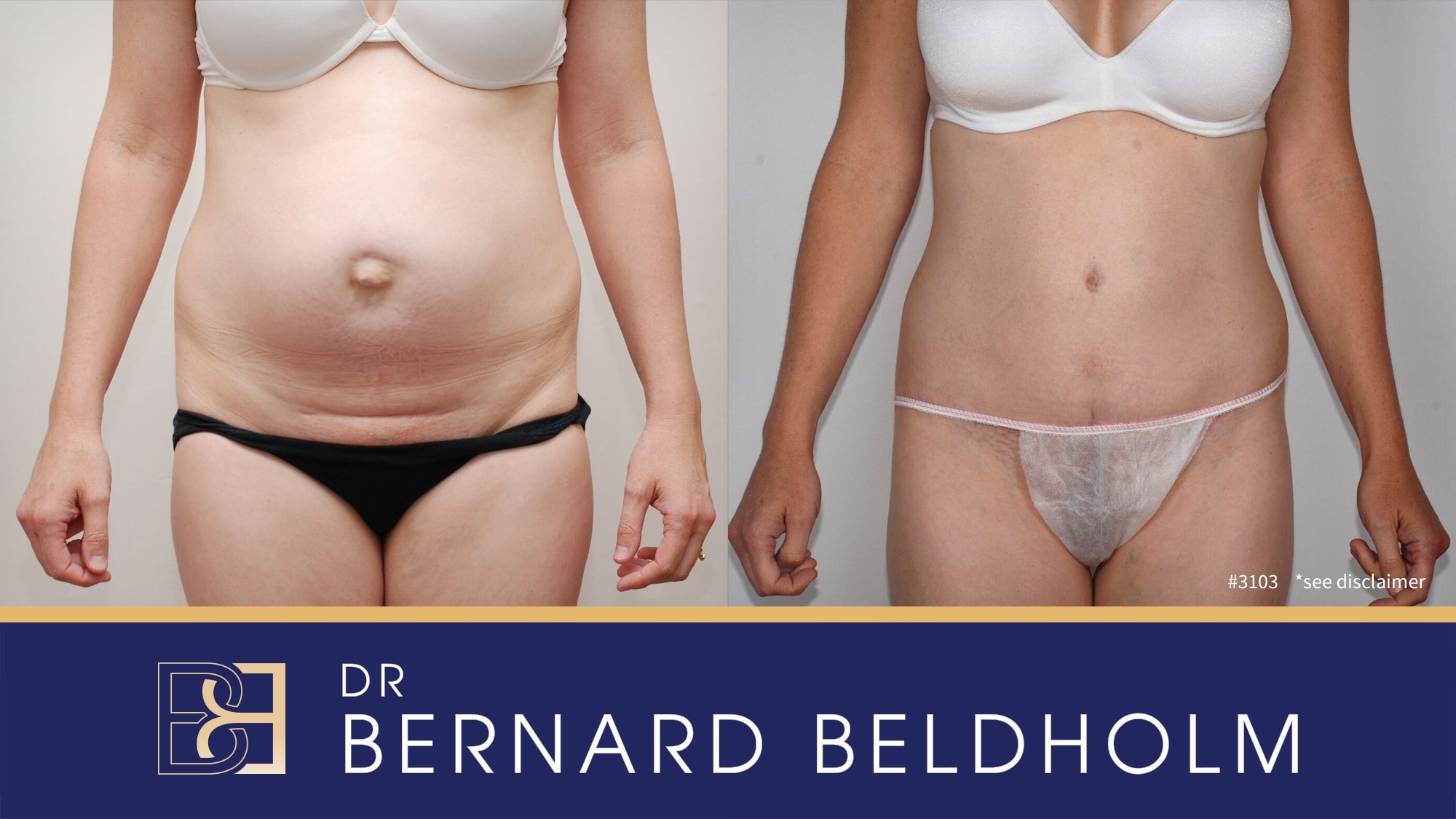
Disclaimer: Operation performed by Dr Bernard Beldholm. Adult content, surgery has risks; individual results vary, seek 2nd opinion. Please see the full disclaimer.
A full abdominoplasty, also known as a standard abdominoplasty, is performed to remove excess fat and loose skin from both the upper and lower abdomen, making it suitable for post-pregnancy or weight loss patients. The scar from a full abdominoplasty is longer than that of a mini and typically goes across the abdomen hip to hip.
It also involves creating a new navel, which results in a small circular scar in addition to the longer incision scar. While the recovery time may be longer, the results are often more dramatic, providing a flatter and more toned abdominal muscles area.
Extended Abdominoplasty
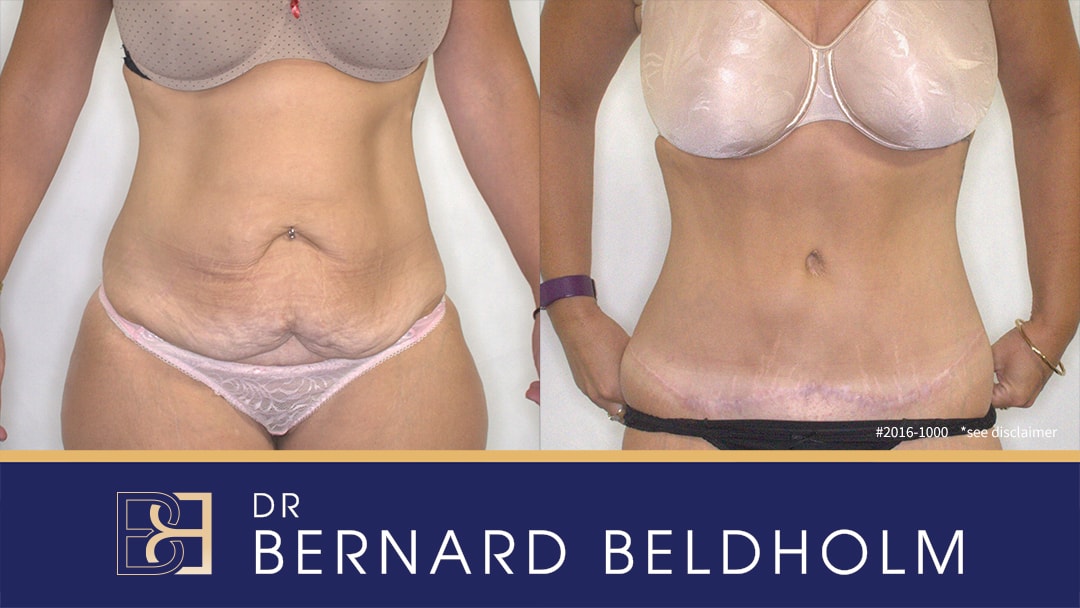
Disclaimer: Operation performed by Dr Bernard Beldholm. Adult content, surgery has risks; individual results vary, seek 2nd opinion. Please see the full disclaimer.
An extended abdominoplasty is suitable for patients who are post-major weight loss and require more extensive skin removal. This procedure not only focus on the abdomen but also the flanks and lower back, resulting in a more comprehensive body contouring effect.
Scars from an extended abdominoplasty incision are more extensive than those from a standard abdominoplasty. This option is ideal for those who need significant excess skin removal and tightening after major weight loss.
Fleur-de-Lis Abdominoplasty
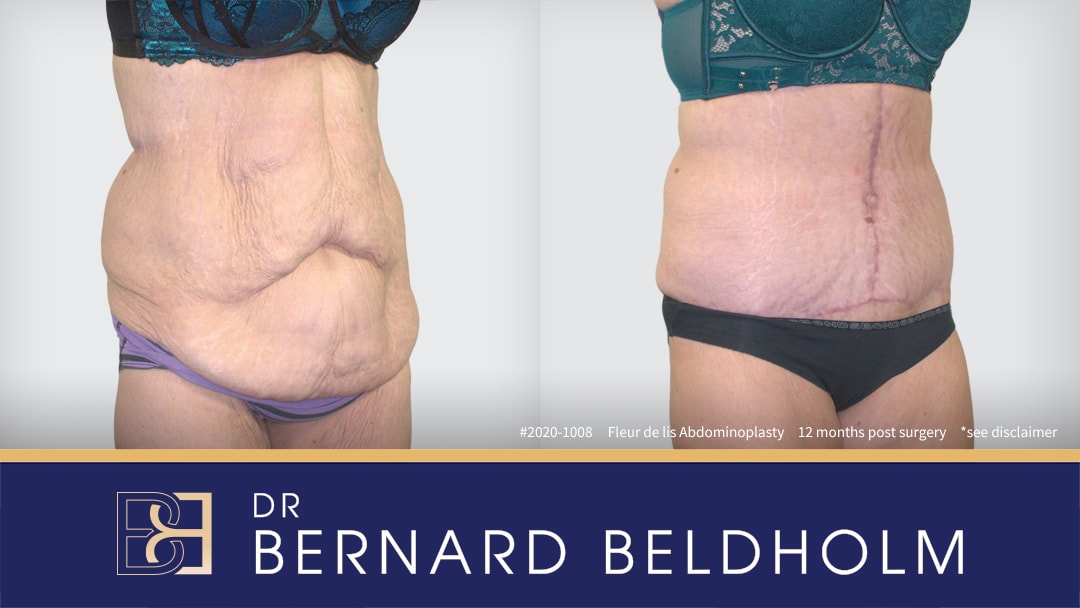
Disclaimer: Operation performed by Dr Bernard Beldholm. Adult content, surgery has risks; individual results vary, seek 2nd opinion. Please see the full disclaimer.
The fleur-de-lis abdominoplasty is designed for extensive skin removal, particularly for patients with significant weight loss or post-pregnancy skin laxity. This technique requires both a horizontal and vertical incision, resulting in a more extensive scar pattern. These scars, while more visible, allow for greater skin tightening and contouring, providing a more dramatic change for those who need it most.
The name “fleur-de-lis” comes from the shape of the incisions, which resemble the French lily symbol.

Effective Scar Treatment Options
There are various methods available to aid in the healing of tummy tuck (Abdominoplasty) scars and reduce their appearance. Various treatments can be applied at different healing stages to achieve optimal results.
Topical Treatments and Creams
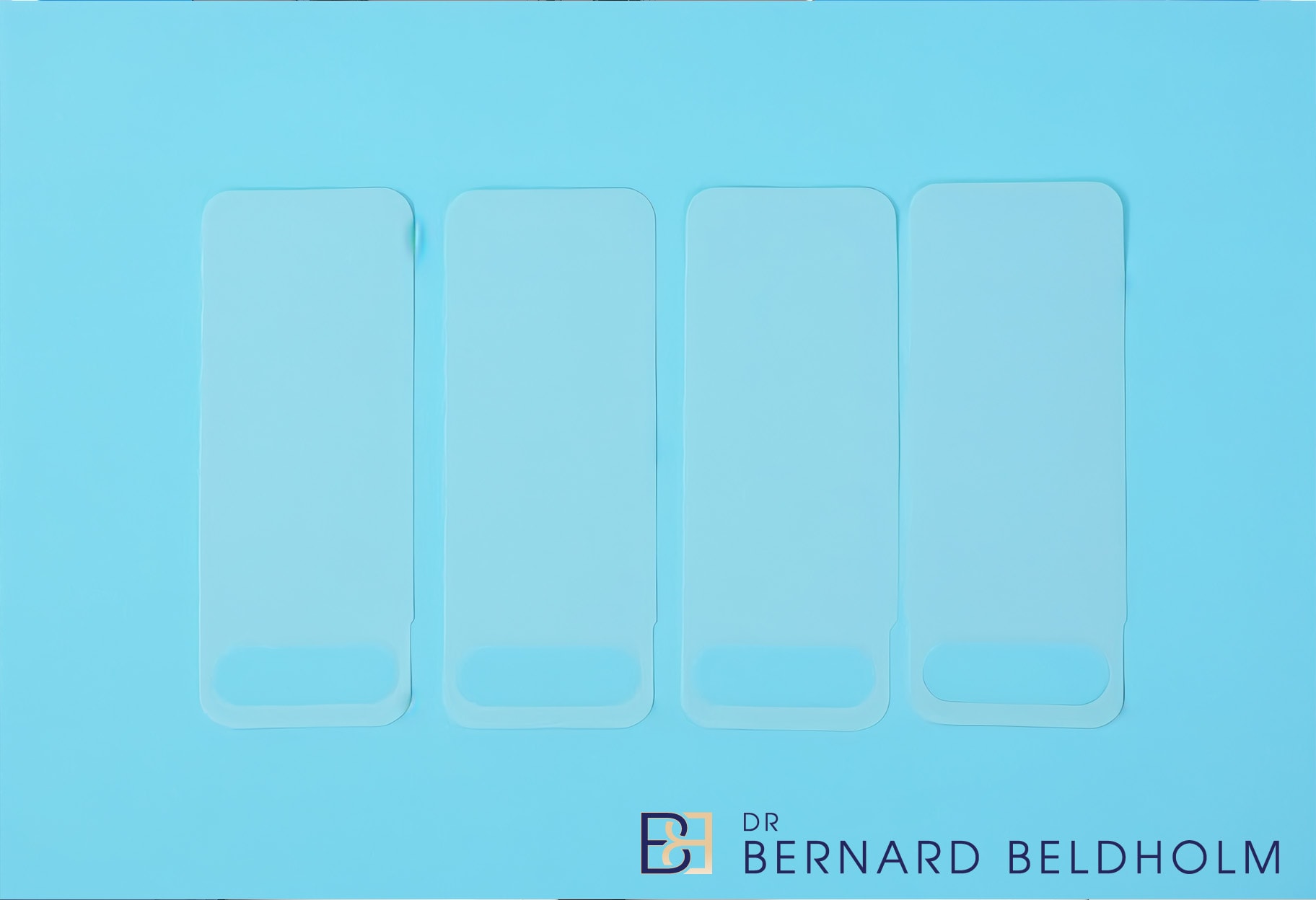
Topical treatments can play a significant role in reduce scarring. Common options include antibiotic ointment, petroleum jelly, and silicone gel sheets. Silicone tape might also be recommended by your surgeon to help reduce scarring. Scar gel can reduce redness around the abdominoplasty scar, making it less noticeable.
Moisturising can soften scars and lessen their appearance over time. Using silicone sheets on scars can effectively flatten them and reduce visibility. Regular use of these treatments can significantly optimise scar texture and colour.
Steroid Injections
Steroid injections can help manage the appearance of thick and raised scars. They are especially effective for treating hypertrophic and keloid scars by reducing thickness and redness.
Laser Skin Resurfacing
Laser skin resurfacing is a treatment designed to elevate the appearance of scars by promoting skin regeneration. It stimulates new skin cell growth, which helps treat various types of scars, including those from abdominoplasty.
This treatment is typically reserved for abnormal scarring and can be effective in correcting abdominoplasty scars.
Scar Revision Surgery
Scar revision surgery is often considered for hypertrophic or keloid scars unresponsive to other treatments. The typical waiting period before undergoing scar revision surgery after a tummy tuck (Abdominoplasty) is 12 to 18 months to allow the scar to settle and the skin to relax.
This surgery removes the old scar and re-joins the skin to reduce the new scar’s appearance. It is a more invasive option but can provide significant relief for those struggling with more prominent or problematic scars.
Preventative Measures for Optimal Scar Healing
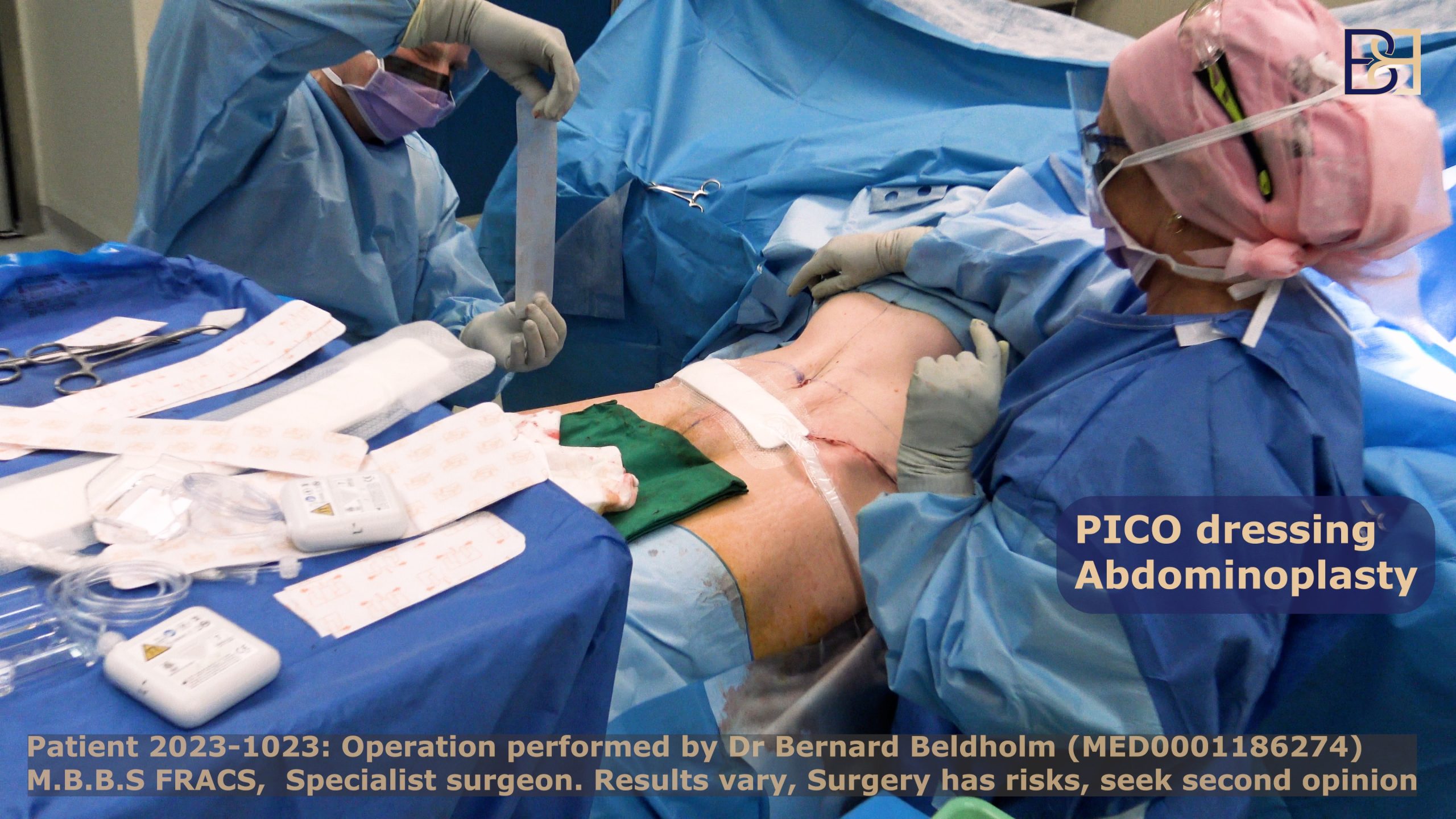
Post-surgical care is essential for optimal healing and reduce scar formation. There are several preventative measures you can take to ensure your scars heal properly and become less noticeable over time.
Follow Post-Surgical Instructions
To optimise the healing process and ensure the scar fades well, it’s important to follow post-surgical instructions carefully. Refrain from heavy lifting and strenuous activities for four to eight weeks post-surgery to promote better recovery. Monitoring incision sites for signs of infection is essential, as infections can delay healing and affect scar appearance.
Starting two to three weeks after surgery, perform scar massage to promote healing by increasing blood flow to the area. Keep dressings in place for three weeks post-surgery to protect incision sites and facilitate healing.
Protecting Scars from Sun Exposure
Exposure to the sun can lead to permanent darkening of abdominoplasty scars. It’s important to protect these scars from sun exposure. Exposure to UV rays can darken scars, making them more noticeable.
Use sunscreen with at least SPF 30 on scars for up to 18 months to prevent discolouration from UV exposure. Wearing protective clothing and avoiding direct sun exposure during peak hours can also help maintain the scar’s lighter appearance.
Maintaining a Wellness-Centered Lifestyle
Proper nutrition is essential for wound healing and plays a crucial role in the recovery process. Maintaining a healthy weight, staying hydrated, and refraining from smoking promote better scar healing. Hydration plays a crucial role in supporting healing processes. Avoiding smoking is essential for optimal abdominoplasty results.
A lifestyle centered in fitness and nutrition can have significant impact on the body’s healing process, leading to better scar outcomes. Engaging in regular exercise, maintaining a balanced diet, and steering clear of harmful habits like smoking can greatly increase the effectiveness and speed of scar healing.
Common Concerns About Abdominoplasty Scars
Patients frequently express concerns regarding how noticeable their scars will be following an abdominoplasty. Scar visibility is a frequent concern among those considering the procedure. Discussing common concerns can ease worries and provide clarity on what to expect.
Lumpiness and Colour Changes
In the initial post-surgery phase, abdominoplasty scars can appear red, swollen, and raised due to inflammation and healing processes. This is a typical part of the healing process. In the early healing period (1-3 months), scars may feel lumpier as collagen builds up, reflecting the body’s natural healing response.
Scars often transition in colour from dark red to lighter shades between 3 and 6 months as they mature and heal. Scars normally change in texture and colour throughout healing; most variations are temporary and part of recovery.
Long-Term Scar Appearance
Abdominoplasty scars usually take 1-2 years to fade. Over time, scar healing progresses and scars fade further. After one year, a good abdominoplasty scar should appear smoother and blend better with the surrounding skin as it matures.
After five years, an abdominoplasty scar becomes almost unnoticeable and continues to fade. In the long term, scars should be lighter, thinner, and flatter, contributing to a more aesthetically pleasing result.
Scar Placement
Careful planning during the surgical procedure ensures that scars are intentionally hidden in areas that are less visible. By positioning the scars below the bikini line, they can be less visible when wearing clothing or swimwear. This strategic scar placement is vital for many individuals after abdominoplasty.
In addition to surgical planning, post-surgical treatments and preventative measures can further reduce the visibility of scars. Here are some effective strategies:
- Use scar creams to promote healing.
- Protect scars from sun exposure to prevent discoloration.
- Maintain a lifestyle that supports skin wellness
These practices all contribute to effective scar treatment.
Dr Beldholm’s Final Thoughts

In conclusion, while abdominoplasty scars are an inevitable part of the surgery, understanding and managing them effectively can significantly make their appearance less visible. By following the stages of scar healing, choosing the right type of abdominoplasty procedure, and utilising effective scar treatment options, you can achieve the best possible results.
Preventative measures, such as following post-surgical instructions and protecting scars from sun exposure, are crucial for optimal scar healing. With patience and proper care, abdominoplasty tuck scars can fade significantly over time, allowing you to fully enjoy the benefits of your new shape.
Book your appointment online now
Frequently Asked Questions
What is a mini abdominoplasty designed for?
A mini abdominoplasty is for those looking to tighten loose skin in the lower abdomen without focusing on the upper part. It’s a great option for those wanting a smaller procedure.
How does the scar from a mini abdominoplasty appear?
The scar from a mini abdominoplasty usually looks like a thin, curved line just above your pubic bone. It’s pretty discreet and can often blend in nicely with your skin.
What type of abdominoplasty is suitable for patients post major weight loss?
If you’ve lost a significant amount of weight, an extended or fleur de lis abdominoplasty is likely your best bet. It targets the excess skin more effectively.
What is the characteristic of the scar from a fleur-de-lis abdominoplasty?
The fleur-de-lis abdominoplasty leaves you with a distinct cross-shaped scar, featuring both vertical and horizontal lines. It’s pretty unique compared to other tummy tucks!
How long does it typically take for abdominoplasty scars to lighten?
Abdominoplasty scars typically lighten in about 1-2 years, so hang in there—your skin will gradually lighten over time!


